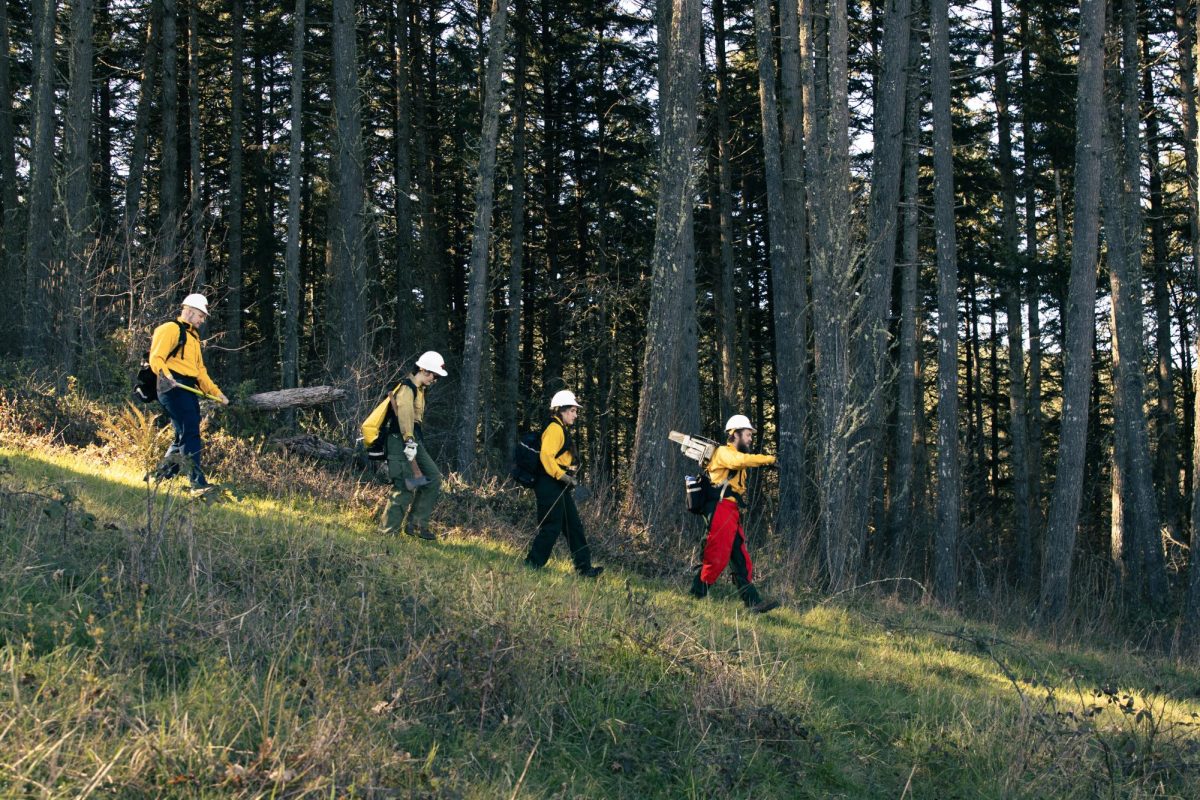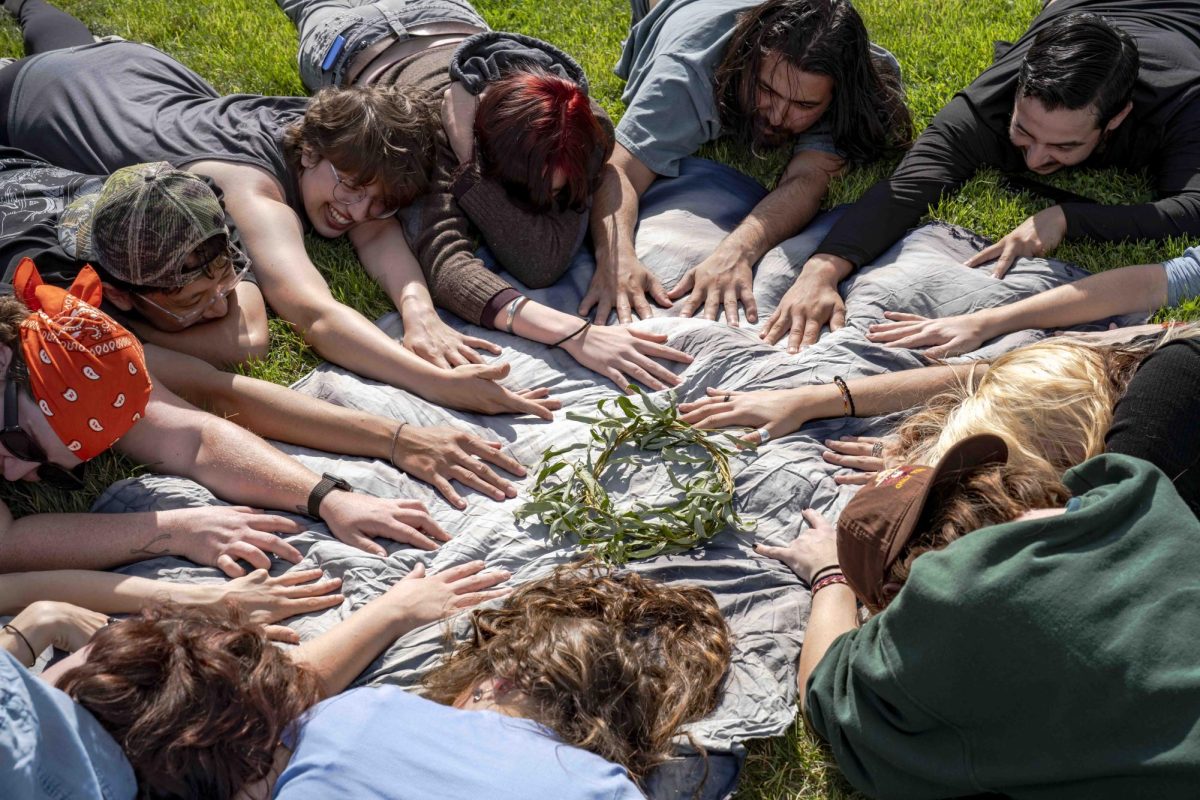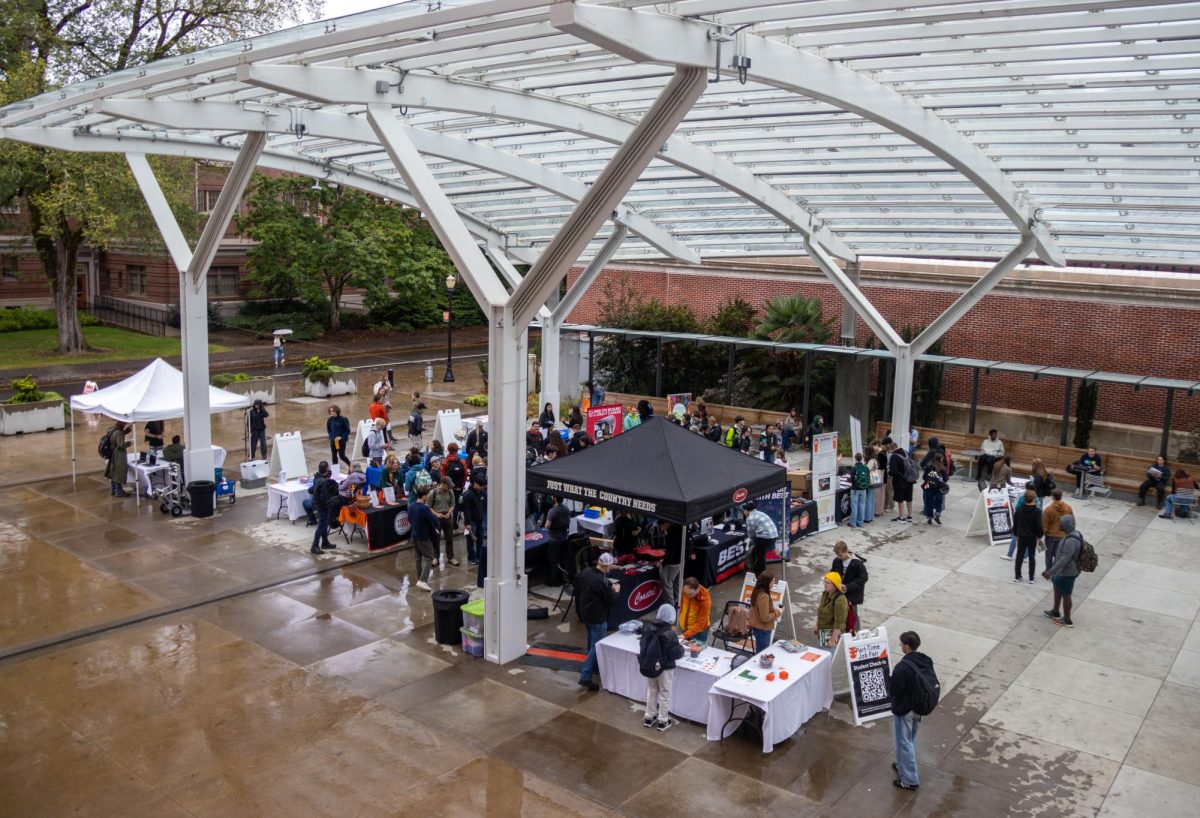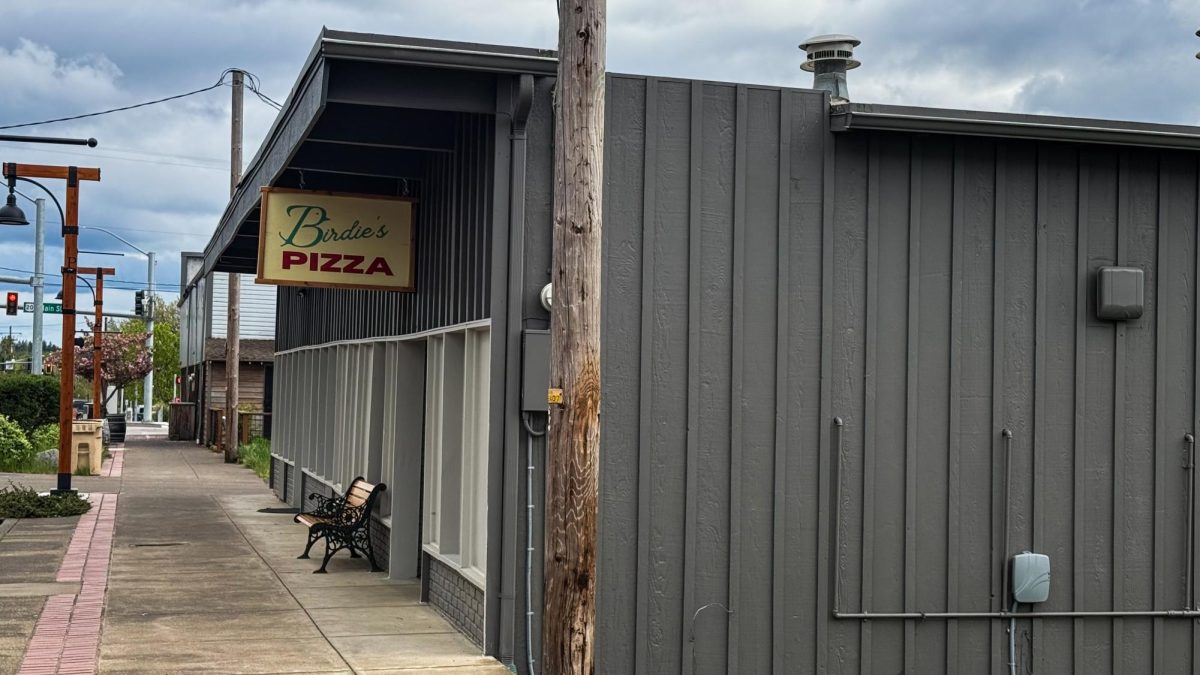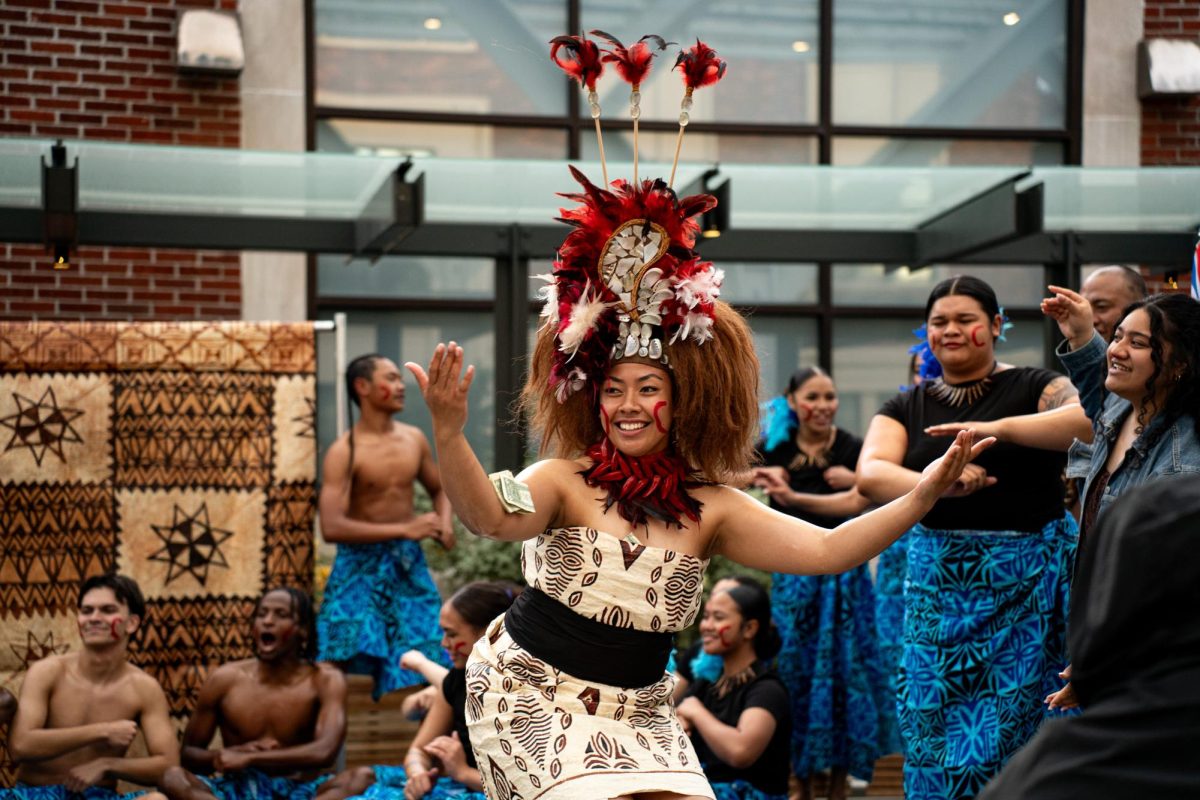You’re covered in ash, barely seeing through the smoke. You’ve been touching scorched earth all day, searching for heat in the understory. You’re tired and running on MREs. But you’re out there, in the middle of action and you can’t help but enjoy the adrenaline rush.
This is not the everyday experience of a wilderness firefighter, just one portion of the job.
The rest of the time you might be hanging out in base, reading situation reports and studying the statistics of ongoing fires on the West coast.
There is a lot more to wilderness firefighting than one would imagine. In addition to the physical labor, firefighters are entrenched in the ecology of forests and other natural areas in a way that we don’t necessarily get to see.
“Especially in the west you can talk to anyone and fire has impacted their lives in a variety of ways,” said Ceiba Cummings, a third-year forestry major at Oregon State University.
Cummings has been working as a firefighter in California for the past three years.
“But then you also hear (that) there’s the biological factor of fire and how naturally occurring fires (are) which is needed for the balance of nature. It’s an element of nature,” Cummings said.
Woody Holmgren, an OSU student majoring in natural resources with a focus on wildland fire ecology, said he thinks anyone can be a wildland firefighter.
“It takes someone crazy enough to want to go run around the woods and fight fire,” Holmgren said. “But once you get past the initial ‘I’m very tired, my entire body is sore and aching but I made it through yesterday and that was a rough day, tomorrow is going to be a rough day, but I’m better for it now.’”
Holmgren spent the past two summers as a firefighter working in different parts of Oregon, including Detroit and Sandy River.
Holmgren learned how to be a part of the team and listen to his supervisors. His experience also helped him realize what he’s truly capable of.
“I realized I can push past (the) tiredness, or pain I’m feeling right now and I can keep going,” Holmgren said. “I realized that it’s mostly in your head, as far as thinking you can’t keep going.”
Holmgren’s first-hand experience changed his perception of wildfires.
“A lot of the news and other media is kind of just fear mongering and saying how terrible a wildfire is,” Holmgren said. “It does have its destructive properties, but it also does a lot of clear out understory brush and stuff like that which is really helpful.”
Danielle Melcher, a senior majoring in forest restoration and management at OSU, started her first season of firefighting the summer before coming to college, aiding her own community in battling a wildfire merely four miles away from her hometown of Mckenzie Bridge.
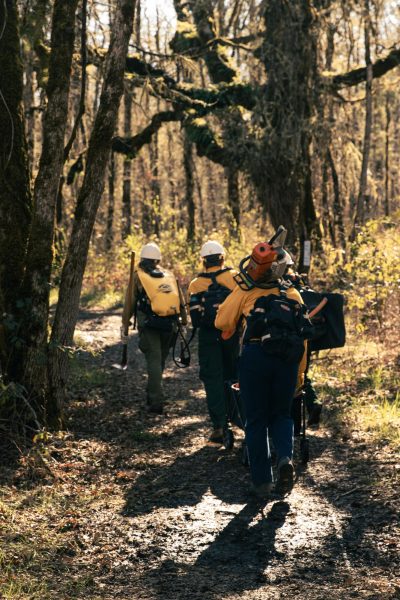
Melcher grew up observing the “boots on the ground” experience, watching her father lead a handcrew, and learned about the logistical side of a fire watching her mother in emergency management
“Having a hand in my community when it really needed it was really awesome so I was kind of hooked after that,” Melcher said.
Melcher has been a permanent seasonal firefighter for two years now.
Oregon has been severely impacted by wildfires in recent years. In the summer of 2023 alone, nearly twenty fires erupted, spreading near the Oregon-California border.
“In the face of a changing climate and how forests have been managed over the past two decades, I think there’s more risk associated with larger fires,” Cummings said.“We can use fire as a tool to suppress fire.”
Holmgren said that many factors in addition to climate change are contributing to longer fire seasons, like the infestation of pine beetles, human population growth and killing off trees.
“With climate change, of course, temperatures are getting hotter,” Holmgren said. “And trees are not able to compensate for that extra heat as well. They dry out. And in the summer, they get scorched just by the sun, not just by fire.”
The usual response to all fires has been to immediately put it out and stop its spread. This strategy, however, creates an excess of fuel, resulting in longer, more intense fires in the future.
This is what Kyle Perkins learned working as a firefighter for the Oregon Department of Forestry in Wallowa county.
“Fire is natural,” Perkins said. “Restricting that for the past hundred and fifty years resulted in a big build up of fuel across the whole western United States. So (now) there are a whole bunch of forests that are ready to be burnt.”
Perkins is a fisheries and wildlife, conservation sciences major with a minor in forestry and comes from a family of firefighters.
Despite its destructive qualities, John Baily, professor of silviculture and forest management at the department of forestry, said fire is a valuable aspect of nature.
“(Fire) does its thing,” Bailey said. “It consumes fuel and feeds itself and spreads and kills stuff but it also creates and stimulates (the) growth of new things. It’s a natural disturbance out there.”
Bailey believes that one way to help prevent wildfires in the long run is to prescribe fires.
“The only way to get rid of all those little fine fuels, efficiently, is prescribed fire,” Bailey said. “If we just leave it out there, we just run the risk that sooner or later, it burns when it wants to, accidentally.”
It takes a lot to use prescribed fires as a strategy.
“(Prescribed fires) is an art and science,” Bailey said.
To prescribe fire effectively, Bailey said it’s important to have in-depth knowledge of the hillside, the fuel type, weather conditions, wind direction and speed, temperature and relative humidity. Bailey also said you need to have certifications from the fire department and smoke management in order to implement prescribed burns.
“Then, you line up all the resources that you need and light a little test fire,” Bailey said. “But the effect is much the same as panic-mode wildfire… In terms of the effect on the grass and the shrubs and the trees.”
Melcher also said the media can paint a bad image of wildfires and mislead the public and more education and awareness is necessary.
One valuable lesson Melcher learned from her time as a firefighter was how to stand her ground and be an efficient leader.
Last year, Melcher had four veterans on her team, all in their thirties, and she was in charge of leading them on which direction to go and instructing them on wildfire protocols.
“If I can do wildfire, I can kind of do anything,” Melcher said.

